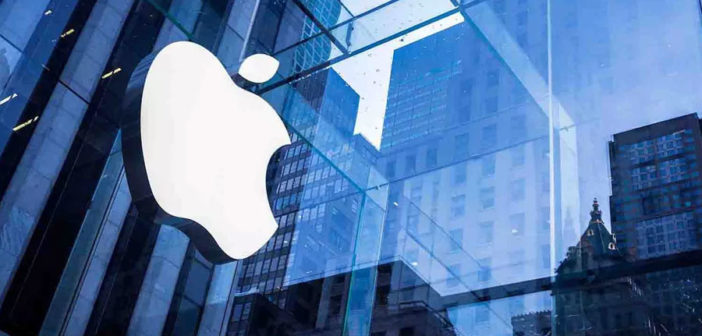Apple doesn’t tweet, but it blanketed Twitter with ads for its iPhone XS launch
Dozens of reporters — inside Apple’s Steve Jobs Theater or back at their offices — spent hours on Sept. 12 tweeting about Apple, sharing details about its two new iPhones and Apple Watch.
Yet despite all this free press attention, the tech giant spent what several marketers considered to be a significant amount on Twitter. On Sept. 12, Apple had a promoted trend ($200,000 per day), a custom build for “like for reminder” ($250,000 for several days), promoted tweets in at least 12 languages (CPMs depend on budget, going from $0.50 to $8) and a hashflag and a livestream of the event. The last two components were probably free, and the other prices are standard, according to sources. Prices are based on what Twitter charges individually for the products, according to interviews with six marketers; Apple may have bought them as a bundle.
The decision to spend so much on a platform that isn’t Facebook or Google perhaps isn’t as crazy for a trillion-dollar company. Apple’s spend is an example of its attempt to dominate the conversation during a launch and appeal to the fandom and journalists on Twitter, which has long promoted itself as a platform that leads the conversation, more so than the rest of social media. Apple’s early adopters, including journalists, are perhaps more commonly found on there than on Facebook, where it’s currently not running any ads.
“Apple is garnering a deeper relationship with their most devout fans and haters and gaining insight into all of the data around the launch conversations. I’d love to see the backend of what they got on that campaign buy,” said Tammy Gordon, president of Verified Strategy who previously led social marketing at AARP.
Twitter declined to comment for this story. Apple did not respond to a request for comment.
The secretive company used to be fairly absent on social networks, but that has started to change, if only slightly. In March 2016, it launched an Apple Support account. In September of that year, it started tweeting from the main Apple account, timed with the iPhone 7 launch. A year later, it joined Instagram. Still, Apple has never tweeted organically. It only buys ads on Twitter, all of which appear as dark posts because they’re a part of ad buys.
Only @apple can pull off having a twitter account since 2011, and not have a single tweet. Yet still run ads from the account. #AppleEvent pic.twitter.com/7as8jf7GBN
— Tyson Cremeens (@Tyr0n313) September 12, 2018
With the launch of Twitter’s transparency center this summer, those tweets are visible, giving a peek into Apple’s Twitter strategy. For example, Apple creates promoted tweets in at least 12 different languages. Twitter doesn’t automatically localize tweets, so buyers need to create and target accordingly, sources said.
To dominate Twitter on Sept. 12, Apple paid for a product called “like for reminder” or “heart for reminder” that promotes a tweet to users’ timelines and requests they “like” the post. Later, the account will tweet specifically at the user. For Apple, the reminder was the time of its launch event with a link to the livestream. HBO has used the same feature to promote “Westworld” every week it aired. Amazon purchased it for Prime Day this year.
The “like for reminder” ad is custom to build and in beta, according to sources. That means Twitter may only pitch it to clients who spend significantly on the platform or who they see as well-suited.
Join us September 12 at 10 a.m. PDT to watch the #AppleEvent live on Twitter. Tap
below and we’ll send you updates on event day. pic.twitter.com/i9mGHTKhvu
— Apple (@Apple) September 10, 2018
“The strategy of hearting their original announcement tweet to get live updates from them was genius. I’ve only seen brands utilize that specifically a handful of times. Definitely something that should be explored more,” said Brandon Doyle, founder of social media agency Wallaroo.
One marketer who had been pitched the feature said it was too expensive and didn’t make sense for the business at the time but that he saw it working well for airline sales or for an event like Apple’s iPhone launch.
@kerrymflynn The #AppleEvent is about to start. Tap below to watch live on Twitter. Reply #stop to opt out.https://t.co/oNC3CTeA2n
— Apple (@Apple) September 12, 2018
It’s unclear what Apple’s return on investment was. There were about 1.9 million tweets about Apple’s event and products on Sept. 12, compared to 3 million tweets last year, 1.5 million tweets of which were just about the iPhone X, according to social analytics company Crimson Hexagon. It’s too soon to get sales figures of the soon-to-be-released products.
In the weeks ahead, Apple will likely get more free press on Twitter as reporters review its new devices. But marketers don’t expect the ads to end.
“Even for a brand like Apple that’s getting lots of earned press, you still have to battle that to stay top of mind to your audience,” said Hannah McGoldrick, social media strategist at InkHouse. “When it comes to Twitter, attention spans are even shorter. It’s just the nature of the platform. Using a paid amplification strategy ensures your message is getting in front of people that matter to you.”
–
This article first appeared in www.digiday.com
Seeking to build and grow your brand using the force of consumer insight, strategic foresight, creative disruption and technology prowess? Talk to us at +9714 3867728 or mail: info@groupisd.com or visit www.groupisd.com




